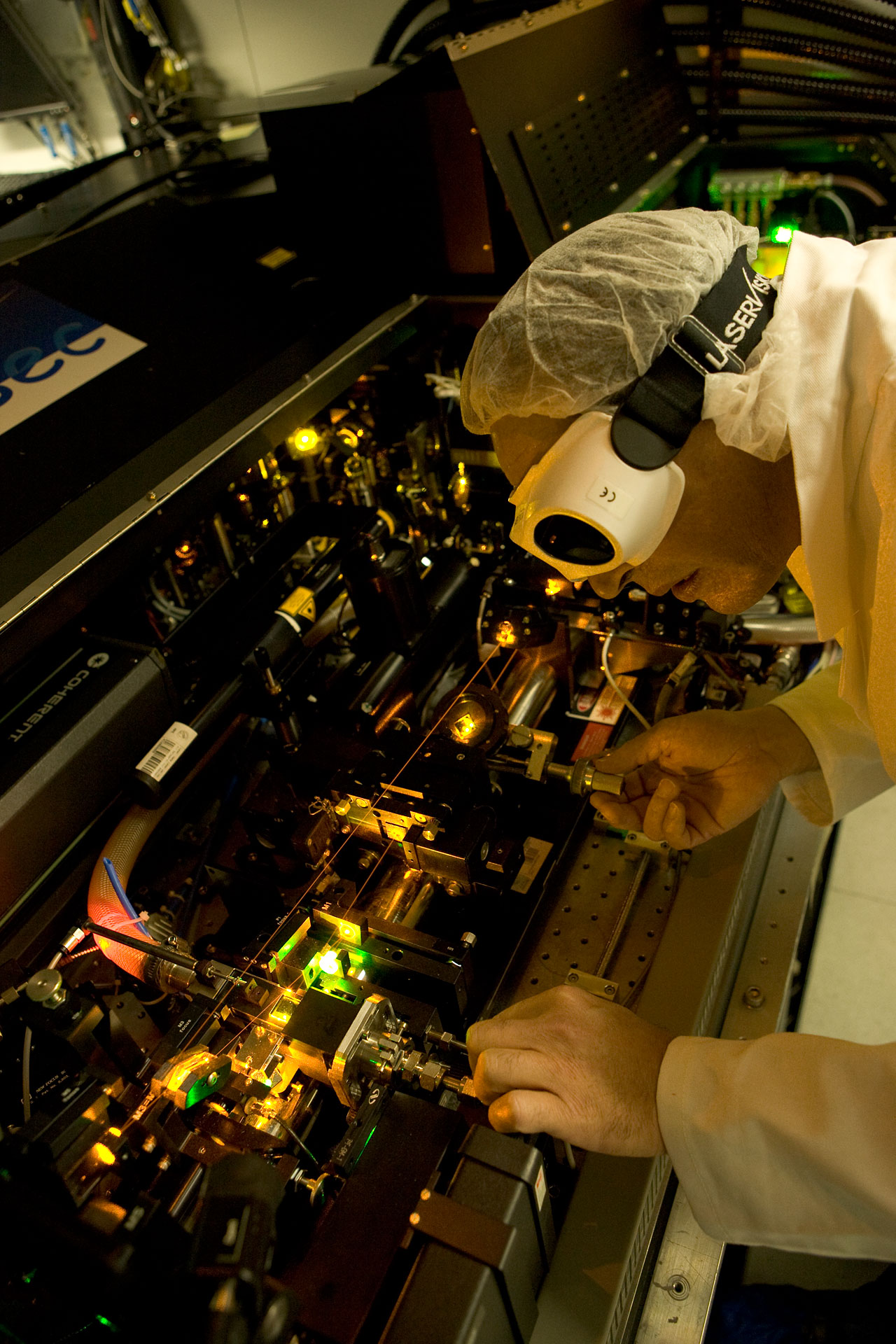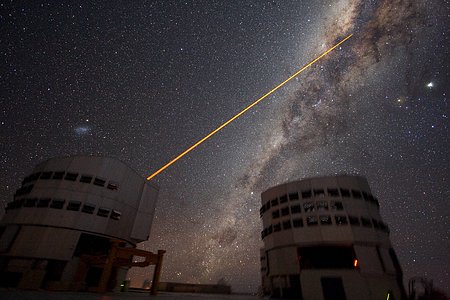Adaptive Optics
Although active optics can ensure that a telescope's main mirror always retains a perfect shape, the turbulence of the Earth's atmosphere distorts images obtained at even the best sites in the world for astronomy, including Paranal in Chile, home of ESO's Very Large Telescope (VLT). This turbulence causes the stars to twinkle in a way that delights poets but frustrates astronomers since it blurs the finest details of the cosmos. Observing directly from space can avoid this atmospheric blurring effect, but the high costs of operating space telescopes compared to using ground-based facilities limits the size and scope of the telescopes we can place off-Earth.
Astronomers have turned to a method called adaptive optics. Sophisticated, deformable mirrors controlled by computers can correct in real-time for the distortion caused by the turbulence of the Earth's atmosphere, making the images obtained almost as sharp as those taken in space. Adaptive optics allows the corrected optical system to observe finer details of much fainter astronomical objects than is otherwise possible from the ground.
Adaptive optics requires a fairly bright reference star that is very close to the object under study. This reference star is used to measure the blurring caused by the local atmosphere so that the deformable mirror can correct for it. Since suitable stars are not available everywhere in the night sky, astronomers can create artificial stars instead by shining a powerful laser beam into the Earth's upper atmosphere. Thanks to these laser guide stars, almost the entire sky can now be observed with adaptive optics.
Since 1989, the European Southern Observatory has led the way in developing adaptive optics and laser guide star technologies. The VLT Laser Guide Star Facility was the first of its kind in the southern hemisphere. Over the years ESO has collaborated with several European institutes and industries to remain a world leader in this field. The Paranal Observatory has the most advanced and the largest number of adaptive optics systems in operation today.
ESO's adaptive optics facilities have obtained top-notch scientific results. These include the first direct observations of an extrasolar planet near a bright star, as well as key characterisations of the black hole at the centre of the Milky Way.
The next generation of adaptive optics is on the way for both the VLT and the Extremely Large Telescope (ELT), with support courtesy of European Commission research funding contracts. Projects slated for the VLT include the use of several laser guide stars at once, as well as advanced adaptive optics instruments such as the SPHERE planet finder. Also under development are advanced systems tailored to meet the challenges of the ELT, which will have a revolutionary 40-metre-class diameter primary mirror. Significant recent progress has also paved the way for attaining a wider corrected field of view, a result that will have an impact on the design of future VLT and ELT adaptive optics systems.


